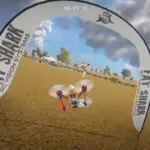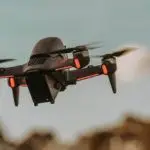Buying a ready to fly (RTF) FPV drone is probably something that most people do when they step into the FPV hobby.
In case you are not already aware of, ready to fly FPV drone typically means the drone is sold in a bundle which include the quadcopter itself, FPV goggles and radio controller. It has everything you need to operate the drone immediately.
While RTF is not the most cost-efficient option compared with buying BNF/PNP in the long run, it lets you start flying FPV out of the box without the need of soldering, buying extra components, or doing complex pairing and setup.
Here are the 3 best RTF FPV drones that you can buy in 2023 to quickly kick start your FPV racing or freestyle journey.
BEST RTF FPV Drones for Outdoors
EMAX Tinyhawk II Freestyle
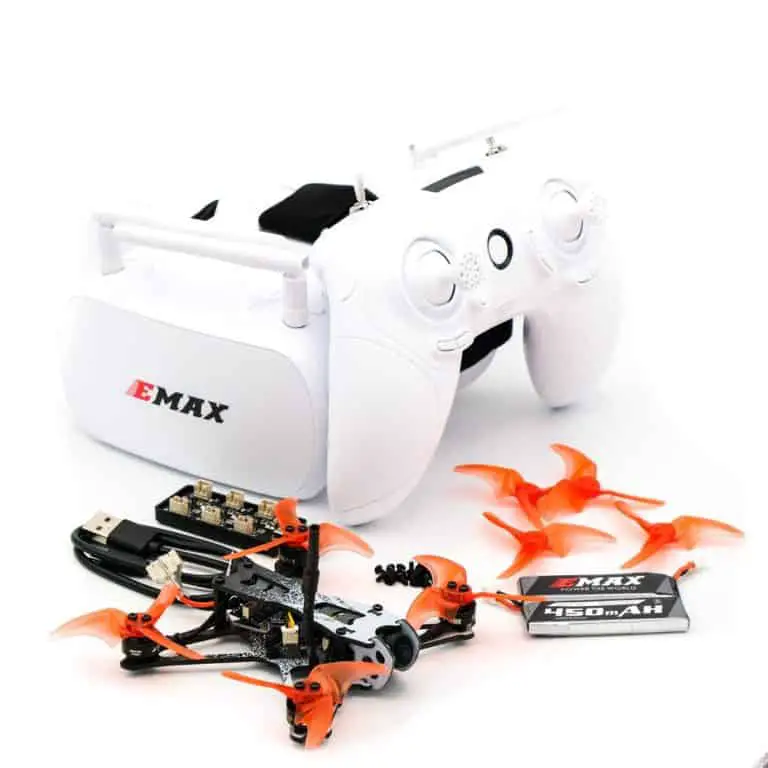
The EMAX Tinyhawk II Freestyle is a 2.5″ drone weighing 80 g with batteries. It is capable of running either 1S or 2S, although I recommend 2S better due to the extra power that it offers.
In terms of performance and features, the EMAX Tinyhawk II Freestyle is no less than the Eachine Novice III. In fact, it is known to be super durable compared to the Eachine Novice III.
As a beginner in FPV drone, you will need that durability as you will be crashing for hundreds over times before you can confidently fly. On top of that, the stock PID is tuned to be softer so that you can control the drone better as a beginner.
The weakness of EMAX RTF is on the radio transmitter. It looks nice but feels like a knockoff (well, not exactly a knockoff considering the price). You definitely want to upgrade your transmitter when you are ready to upgrade your drone.
The FPV goggles included in the deal are so-so. It doesn’t support diopters,, but you can do some slight adjustment to get a clearer view if you have a slight vision condition. Again, nothing to complain about given the price.
BEST RTF FPV Drones for Indoors
Hisingy Stargazer – Most Innovative, Beginner Friendly FPV
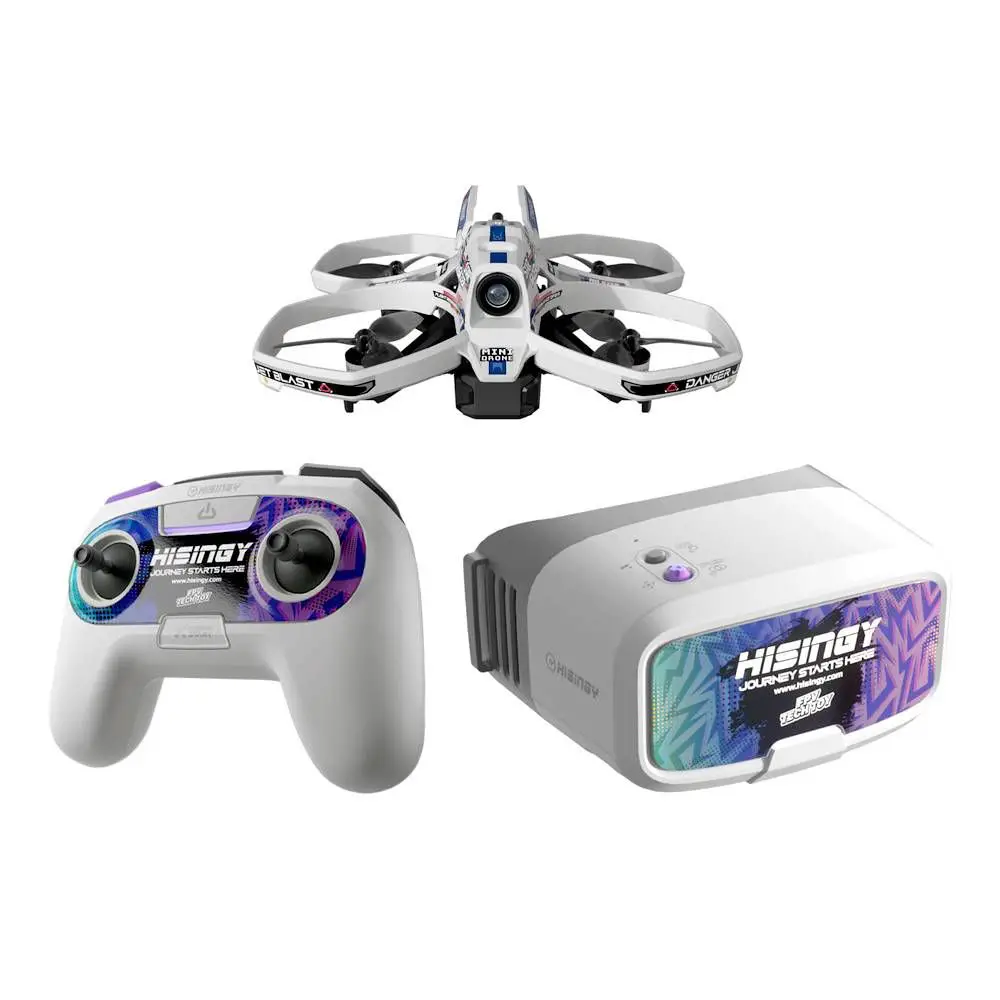
The Hisingy Stargazer is an FPV drone that is designed to be easy to fly for beginners. It has altitude hold, which is lacking in almost all RTF FPV drones. Most importantly, it has a gamified learning process. Pilots can gain points as they fly, and points can be used to upgrade the drone, making it powerful.
The drone is also well-designed and comes with a manual, troubleshooting guide, and spare parts. However, it has a shorter video range compared to other FPV drones, and does not have full acro mode.
Here are some of the pros and cons of the Hisingy Stargazer:
Pros:
- Easy to fly for beginners
- Altitude hold
- Gamified learning process
- Well-designed
- Easy to customize drone settings through apps
- Highly customizable appearance and parts
Cons:
- Video recorded in black and white mode
- The size of goggles is more suitable for teenagers and kids
- Does not have full acro mode
- Pricy
The altitude hold feature is a great way for beginners to learn how to fly an FPV drone. It takes away the need to constantly worry about throttle control, which can be difficult for beginners.
While altitude hold is great, it is not something new in the RTF category. EMAX Ezy Pilot already has that feature. The real innovation and killer feature is the gamified design of the system.
The gamified learning process is a fun way to learn how to fly an FPV drone. It gives users a sense of accomplishment as they progress through the different levels. The leveling concept allows beginners to practice flying at a slower pace when they just started, and as they progress, they unlock stronger performance which they couldn’t properly handle when they are new. It makes the learning smooth and progressive.
In terms of design, the Hisingy Stargazer looks cool. It is made of durable materials and has a sleek appearance. There are parts that you can buy and further customize it to make the drone unique.
The major drawback of Hisingy Stargazer is the price. It can be too expensive for some users, although I would say FPV is never a cheap hobby. Pro pilots would go for better quality drones with similar price range.
Overall, the Hisingy Stargazer is a good option for beginners who are looking for an easy-to-fly FPV drone. It has a number of features that make it ideal for beginners, such as altitude hold, a training mode, and a gamified learning process. However, the price may be too high, and it is not suitable for pro pilots.
GEPRC TinyGo – Best Tiny Whoop
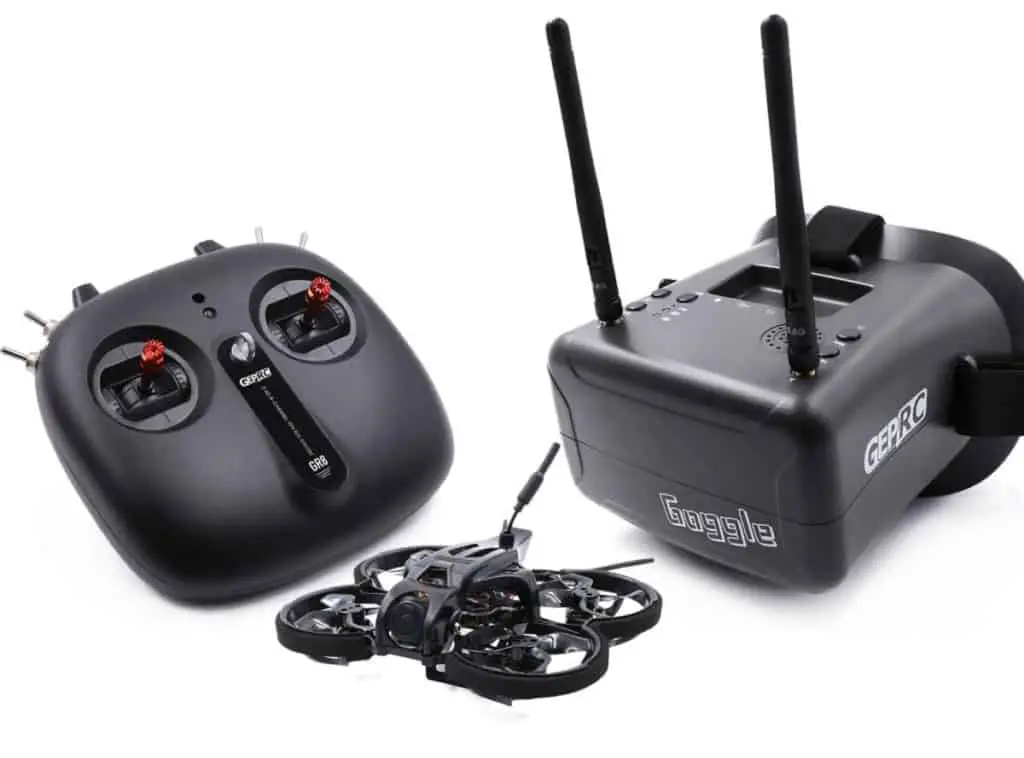
The GEPRC TinyGo is another contender for the best beginners RTF whoops. The whoop itself comes with useful features such as OSD, VTX telemetry, adjustable VTX power output, buzzer and turtle mode.
The stock radio transmitter uses a unique protocol, which is not compatible with most of the drones in the market. Hence, you can’t use your transmitter for other drones. Conversely, if you can’t use a 3rd party transmitter for your TinyGo unless you change the radio receiver. Another downside of the radio is that it uses AA batteries. That is a lot of waste in the long run.
Having said that, the radio transmitter is reasonably big and resembles a full-sized transmitter. That can help you to transition into operating higher end transmitters better, since high-end transmitters are usually full-sized. You can also use the transmitter to bind up to 3 GEPRC drones at the same time. The best part is, the transmitter can be used for simulation.
Note that the GEPRC TinyGo comes with 3 variants: the normal racing, LED, and HD variants. Their specs are the same, except the LED variant has LED stripes on the frame while the HD variant boasts 4k HD video.
EMAX Tinyhawk III – A Whoop that Supports Your Growth
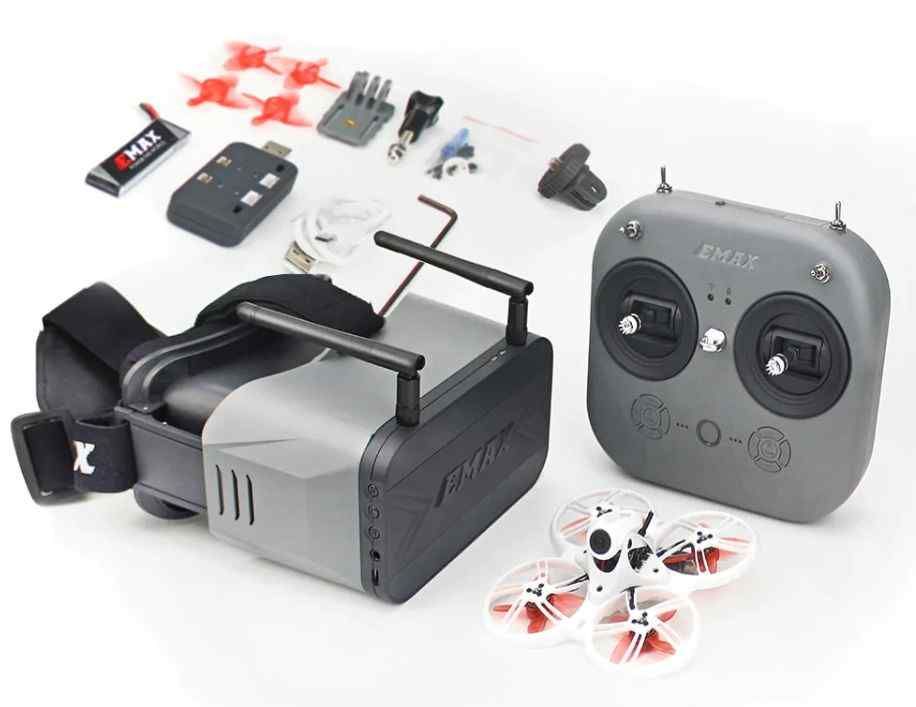
The EMAX Tinyhawk III is the small cousin of the Tinyhawk Freestyle. It has all the features its bigger cousin has, eg.: OSD, VTX telemetry, adjustable VTX power output, buzzer, turtle mode etc.
This RTF deal comes with the new EMAX Transporter 2 goggles and the EMAX E8 radio transmitter. Both are superior to those included in the Tinyhawk Freestyle.
The FPV goggles have a detachable monitor. Whether you are wearing glasses, prefer a camera drone-style view, or have motion sickness wearing FPV goggles, the FPV monitor is a good alternative. You can even attach the FPV monitor to your radio transmitter, if you prefer not to wear goggles.
The goggles also come with a DVR, which is not available in the older version.
When you upgrade your goggles (you definitely will, if FPV is a long-term hobby for you), the old FPV monitor can become an extra screen for spectators. The FPV screen is also handy whenever you need to do some troubleshooting or testing – you don’t have to repeatedly wear and take off your FPV goggles.
The radio transmitter is powered by a Li-ion battery, which you can charge through the transmitter itself. While it is still smaller, the EMAX E8 radio gives you a feel of a standard radio transmitter. This makes it easier for you to transition to a standard radio in the future. And, yes, the radio supports simulation.
As for the drone, it flies smoothly. A typical flight can last about 5 minutes.
The camera on Tinyhawk III is easily adjustable. When you are new, you probably want the camera to point forward. As you become better in flying the drone, point the camera upwards. The higher the camera is facing, the faster is the drone (and the easier for it to crash).
While the drone is extremely durable, I would still recommend training in simulators before you attempt flying acro mode.
Note that only 1 battery is included in the bundle. You’ll need to buy more.
Comparison: EMAX Tinyhawk II Freestyle/III vs GEPRC TinyGo
I’ve compiled the differences between the 3 drones in the table below for your comparison. While some of the features are very basic, I listed them down so that you can easily compared with other cheaper drones that you might be consider buying. Hisingy Stargazer is not included because it is a total different niche and price point.
| Brand | EMAX Tinyhawk II Freestyle | EMAX Tinyhawk III | GEPRC TinyGo |
|---|---|---|---|
| Highlight vs competition | Very durable drone, soft tuning | Very durable, versatile FPV monitor | More batteries included, better radio transmitter |
| Use | Outdoors | Indoors | Indoors |
| Size | 115 mm (2.5”) | 76 mm | 79 mm |
| Weight | ~80 g | ~50 g | ~73 g |
| Video resolution | 700 TVL | 800 TVL | 700 TVL |
| FPV goggles resolution | 480 x 272 | 800 x 480 | 800 x 480 |
| Diversity |  |  |  |
| Radio transmitter compatibility | FrSky D8/16 | FrSky D8/16 | FHSS |
| Radio channel | 6 | 8 | 8 |
| DVR |  |  |  |
| OSD |  |  |  |
| VTX power output | 25 – 200 mW | 25 – 200 mW | 25 – 200 mW |
| VTX telemetry |  |  |  |
| Battery | 1/2S | 1/2S | 1/2S |
Acro Mode vs Angle Mode vs Horizon Mode
Except for Hisingy Stargazer which has no acro mode, the other 3 drones listed here are preset with 3 flight modes: acro mode, angle and horizon mode. While these modes are typically configurable in Betaflight (again, except Stargazer which is configured through a phone app), RTF drones have setup done for you.
Acro mode is also known as the rate mode or manual mode. It requires you to give a command (via the sticks on your radio transmitter) for every movement. This is the only mode that allows you to make crazy moves.
For instance, if you push the right roll and release the stick, the drone will maintain the action. You need to push the stick from its resting position to the left to cancel the roll.
Angle and horizon modes are known as the assisted or self-leveling mode. In both modes, your drone will return to its level position automatically once you release the pitch/roll stick.
The key difference between angle and horizon mode is your drone can flip in horizon mode but can’t do that in angle mode.
As a beginner, you can start with flying either angle or horizon mode because they are way easier than acro mode.
If you want to really enjoy FPV, make insane tricks with your drone, or compete in races, you should move to acro mode as soon as possible. This is because the auto leveling feature actually holds you back from smoother and faster maneuver. It can be difficult to transition from self-leveling to acro mode if you already get used to it.
Having adjustable flight modes on your RTF drone is useful if you need to let your friend or family fly your drone. Trust me, that will definitely happen. Switching to self-level mode will hopefully reduce the risk of crashing your drone, when handled by your friends or loved ones.
Final Thoughts
The main reason most beginners go for an RTF drone is due to its simplicity: it flies out of the box, and you don’t need to worry about buying wrong or incompatible components. Because of that, many people will also consider sending an RTF drone as a birthday or Christmas gift.
Of course, RTF drones come with some disadvantages. For instance, every RTF comes with a radio transmitter, and you will end up with lots of transmitters if you buy only RTF. The transmitter you have for 1 model might not be suitable for another model.
On top of that, the transmitters and goggles (if included) often have so-so quality, and might not give you the full and immersive FPV experience. And of course, don’t expect you can win races against customized drones.
If you need an entry level FPV drone to start flying quickly, RTF is definitely a good choice. But if you have more budget and want to save more in the long run, get a BNF or PNP drone instead.
Lastly, remember to get yourself a drone simulator so that you can learn how to fly in acro mode faster and cheaper, since crashing in a simulator costs you nothing.

